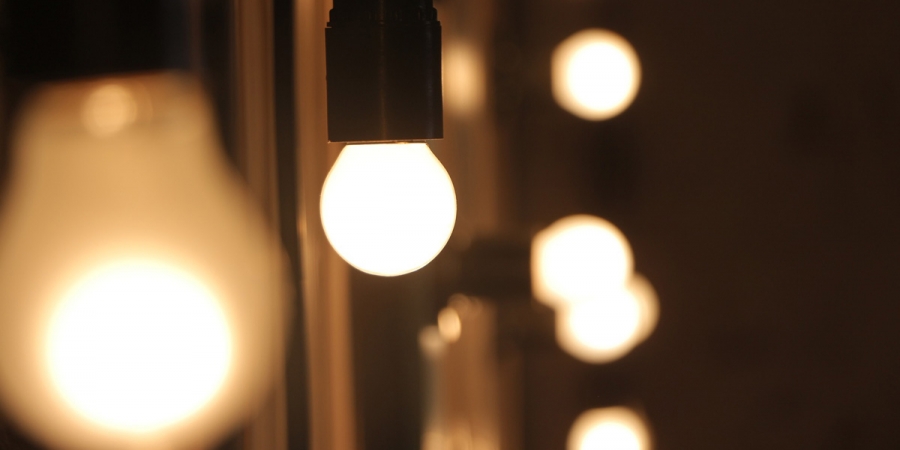
Photo: Engin Akyurt

Photo: Engin Akyurt
This page is more than one year old.
Astral projection is commonly described as an experience where an individual's consciousness, often referred to as the 'astral body', separates from the physical body and travels outside of it. This concept, while sounding like something out of science fiction, has been a part of various cultures and spiritual traditions for centuries and is often intertwined with the concept of an out-of-body experience (OBE).
Also known as astral travel, the practice is a voluntary one that is thought to occur intentionally, unlike near-death experiences (NDEs), which are often involuntary and happen under extreme circumstances. Once free of the physical body, the consciousness of a practitioner is said to be able to travel across different planes of existence or locations in the universe.
It's also said to give access to the astral plane, which, according to various esoteric, spiritual, and metaphysical beliefs, is a realm of existence that is separate and distinct from the physical world. It is often depicted as a non-physical, ethereal world that exists alongside or overlies the physical universe. This plane is believed to be populated with various entities, spirits, and energies that are not normally perceptible to the physical senses.
Those who claim to have experienced astral projection often describe seeing their physical body from an external perspective, usually floating above it. This experience is typically accompanied by feelings of peace or relaxation and sometimes even encounters with other entities or visits to different locations, both earthly and otherworldly.
Astral projection is often studied with interest by paranormal researchers because the practice suggests that the soul can physically leave the body, existing as a form of extra-corporeal energy. This idea is closely linked to various beliefs about death and the afterlife, and it supports the idea that ghosts exist.
Historically, astral projection gained prominence through the work of 19th-century theosophists, who were instrumental in coining and popularising the term.
More recently, popular culture has depicted astral projection as a supernatural ability or a form of advanced meditation. It has been the topic of various books, movies, and television shows. The storyline of the 2010 supernatural horror movie 'Insidious' revolved heavily around the idea of a young boy's consciousness becoming trapped outside of his body in the astral plane. Astral projection is also an important plot point in the Netflix series 'Stranger Things' when Eleven projects her consciousness in order to gain insight and view remote locations.
Astral projection is sometimes linked with meditation and dream states, and in some cases, it has been induced through hallucinogenic and hypnotic methods, including self-hypnosis. However, although it is similar to the practice of remote viewing, the two phenomena have some distinct differences.
Whereas astral projection involves the consciousness leaving the physical body, remote viewing is more about accessing information or impressions about a place, object, or event at a distance without the consciousness leaving the body. It is used as a means to attempt to gather information about a distant or unseen target through extrasensory perception (ESP) or psychic abilities.
Astral projection is an experiential, subjective journey often associated with spiritual growth, self-discovery, and sometimes metaphysical or paranormal encounters, while remote viewing is more methodical and objective in its approach. It is often conducted in controlled environments and doesn't necessarily involve any belief in the astral plane or other dimensions.
In terms of scientific acceptance, both practices face skepticism. While there have been some experiments and studies, particularly looking into the potential military applications and feasibility of using remote viewing for espionage, the evidence is not widely accepted in mainstream science. Research involving brain stimulation treatments and hallucinogenic drugs has produced experiences suggestive of astral projection. However, these findings are not conclusive evidence of the phenomenon's objective existence.
The concept of astral projection raises a few questions. For one, there is the question of how non-physical consciousness interacts with the physical world. If the astral body can observe the physical world, does this imply some kind of sensory perception? How does this perception work without the physical sensory organs like eyes and ears?
Critics like psychologist Donovan Rawcliffe and author Arthur W. Wiggins argue that astral projection is more likely a result of delusion, hallucination, vivid dreams, or the power of suggestion.
From a more theoretical standpoint, some within the paranormal field think that astral projection could be possible through a certain quirk of quantum mechanics. The highly speculative theory suggests that quantum entanglement, a physical phenomenon where the tiny particles that make up the world around us become connected and instantaneously affect each other regardless of distance, could play a role in astral projection. In this theory, the consciousness is suggested to have quantum properties, allowing it to be entangled with other entities or locations that facilitate astral travel.
Other theories suggest that astral projection might rely on the existence of multiple dimensions. Astral projection could be a process where the consciousness shifts its awareness to these other dimensions, allowing for experiences that are not bound by the physical laws of our familiar universe.
Some theories in consciousness studies propose the existence of a unified, universal field of consciousness that all individual minds are part of. Astral projection might involve tuning into and navigating this shared field of consciousness, allowing the consciousness to access different locations or experiences remotely.
These highly speculative theories are a great source of debate within the paranormal community. Whether viewed as a profound spiritual journey, a psychological phenomenon, or a pseudoscientific concept, astral projection remains a topic that captures the imagination and curiosity of many.
A Simple Guide To Astral Projection

Photo: pixabay.com
Many books and websites offer guides to induce astral projection through meditation-like practices, which can be therapeutic or relaxing. Below is our guide to embarking on your own voluntary out-of-body experience.
If you're ready to begin your own astral journey, then you'll first need to make sure you are alone and undistracted in a quiet and comfortable location, ideally your bedroom or a comfy arm chair. Don't turn out the lights, as it'll make it harder to visualise your current location, plus you won't be able to see where you're going when you leave your body.
Put your phone on silent, close the curtains, leave the lights on, turn everything else off, and then lie down or get comfy in your favourite chair.
Step One: Enter a REM state
Astral projection is very closely linked with lucid dreaming, these are dreams that you are consciously aware of being in and can often change or influence. Lucid dreaming happens during a phase of sleep called REM, or Rapid Eye Movement sleep. One way to do this is to set an alarm for six hours and then fall asleep. When the alarm wakes you in six hours, it should interrupt your natural sleep cycle at a point when you are in a REM state.
Step Two: Return to your dreamscape
Next, you'll need to put your body back to sleep while keeping your mind awake. So, get yourself comfortable again, close your eyes, and prime yourself to fall back to sleep by telling yourself with conviction, "I will be aware and awake as my body falls asleep," or repeat, "body asleep, mind awake." Stay present, mentally alert, and aware of your body and mind as you begin to drift back to sleep.
There's an alternative method to steps one and two that involves using a lucid dream sleep mask. When the special sleep mask detects that you've entered REM sleep, it emits gentle, customisable light signals. The flashing lights aren't enough to wake you up, but they're said to be enough to signal to your consciousness that you are asleep and in a REM state, allowing you to become aware.
Step Three: Visualisation
The next step is to visualise leaving your body. That's why it's a good idea to keep the lights on so you can clearly picture your body in its current position.
One common method is called the rope technique. Begin by imagining that there is a rope hanging above you. Imagine yourself reaching towards it, see your hand stretching out and grasping it. Pull yourself up by pulling it towards you, then stretch out your other hand and grab the rope higher, and again pull yourself further up the rope. Visualise yourself moving up as you climb out of your physical body. Concentrate on climbing the rope, and don't stop until you feel your entire self separating from your body.
Step Four: Explore
Now you should be floating above your body. Look down at yourself, see your body in the position you left it, and then look around and take in the sights of the room around you. Some people find that once they leave their body, they get sucked back into it quickly, so move away as soon as you feel comfortable with your surroundings. From this point, you can just keep on going, explore another room, go outside, and see how far you can go before you naturally wake up and are pulled back to reality.
More Essential Parapsychology
See All
ArrayOctober 11, 2024
The Reality Behind Kirlian Photography’s Glowing Auras

ArrayOctober 07, 2024
Could Retroactive Psychokinesis Allow Us To Influence The Past?

ArrayOctober 05, 2024
What Spontaneous Cases Are & Why Parapsychologists Research Them
Further Reading
Dive into the world of the paranormal and unexplained with books by Higgypop creator and writer Steve Higgins.

Whispers From The Other Side
A guide to capturing and analysing EVPs for ghost hunters of all levels, covering techniques and theories.
Buy Now
Investigating The Unexplained
Practical advice on conducting paranormal investigations and uncovering the unexplained.
Buy NowMore Like This

ScienceMarch 10, 2025
What Ghost Hunters Mean When They Talk About Dimensions

ScienceNovember 25, 2024
Is Zero-Point Energy Being Suppressed By World Governments?

ParanormalOctober 12, 2024
Recurrent Spontaneous Psychokinesis The Parapsychological Principle Behind Poltergeists
 See More on Audible
See More on Audible

Comments
Want To Join The Conversation?
Sign in or create an account to leave a comment.
Sign In
Create Account
Account Settings
Be the first to comment.